Harem حارم
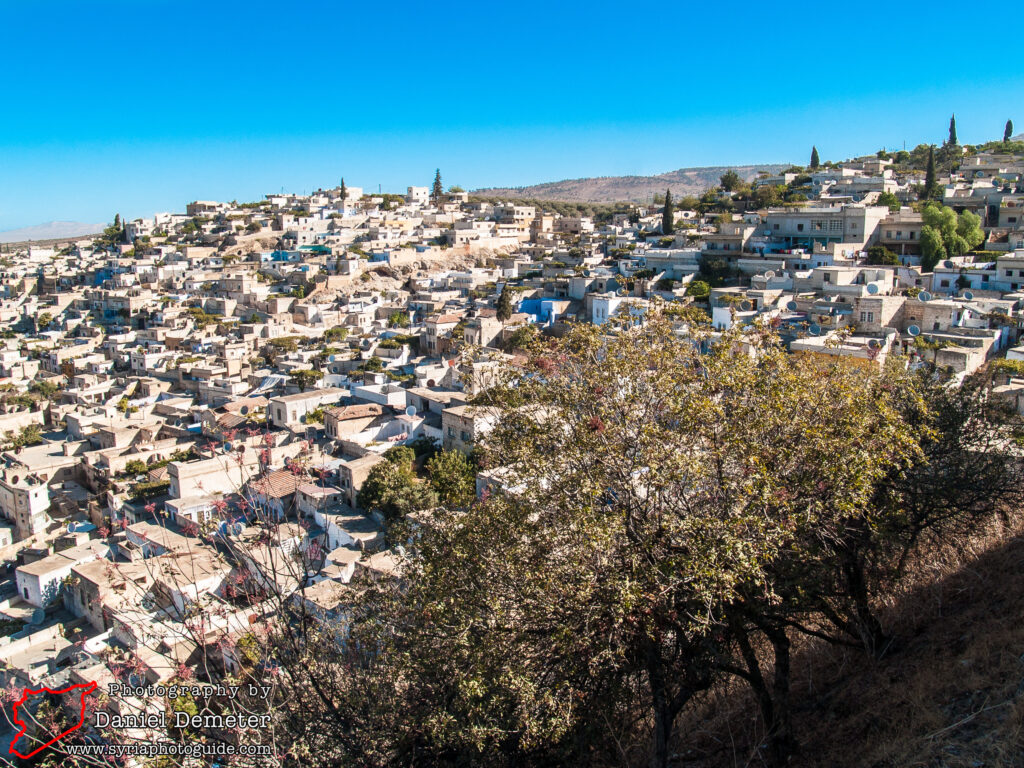
Harem (حارم) is small town overlooking the rich Plain of Amuq to the east of Antioch (modern Antakya), across the border with Turkey. It is more attractive than most Syrian towns thanks to the locals preference for blue paint over bare concrete. The main item of interest here is the rather dilapidated 12th century Ayyubid fortress that dominates the center of the town from an artificial mound.
The strategic importance of Harem (حارم) has resulted in a long and turbulent history dating back to the Byzantine period. Being on the main route between Aleppo (حلب) and Antioch (Antakya), as well as the route which branched off to the south to Jisr al-Shaghur (جسر الشغور) and the Orontes river valley, there were frequent battles for control over this site. Although the modern road from Antioch (Antakya) to Aleppo (حلب) runs about five kilometers to the north on a more direct route across the Plain of Amuq, Harem (حارم) marks the southern limit of the corridor between there two major centers.
Harem (حارم) was occupied by Byzantine forces in 959 during Emperor Nicephorus II Phocas’ campaign to regain control of the deep hinterland of Antioch. The Byzantine castle which he established fell in 1084 to the Arab, Suleiman Ben Qutulmish, who seized Antioch in the same year. Shortly afterwards, in 1086, the Seljuq Turks took control.
When the Crusaders arrived in the area it took them a nine month siege to capture Antioch in 1098. Harem (حارم) threatened the rear of their besieging forces and was taken first in November 1097. It was retaken by the Muslim coalition in February 1098, but was abandoned to the Christians before the fall of Antioch in June 1098. It was subsequently held by the Crusaders for over half a century as part of the outer defenses of Antioch. In 1119, Crusader forces under Roger, Prince of Antioch, suffered a serious defeat at the nearby battlefield later termed Ager Sanguinis (Field of Blood) at the hands of the Muslim forces of Aleppo (حلب). The actual location of this site is just to the east of Sarmada (سرمدا).
Nur al-Din took Harem (حارم) twice, first in 1149. It was recaptured by the Crusaders in February 1158 after a two month siege mounted by a coalition headed by Baldwin III, King of Jerusalem, which included the then Price of Antioch, the odious Renaud de Châtillon. This was apparently the last major assault mounted by Crusader forces to the east of the Orontes. In 1164 Harem (حارم) fell again to Nur al-Din during the first concerted Arab attempt to dislodge the Crusaders from their inland positions. Nur al-Din broke off the siege when threatened by a coalition of Crusader forces (Prince Bohemond III of Antioch, Count Raymond III of Tripoli, Hugh of Lusignan and the Byzantine, Constantine Coloman). He drew the Crusader forces into battle on August 10th on the Plain of Artah. The Crusaders suffered a disastrous defeat and the four leaders were all taken into captivity in Aleppo (حلب).
Harem (حارم) remained in Arab hands right up until the fall of Antioch a century later (1268), a thorn in the side of the Crusader presence in the rich Plain of Amuq below. Just as full Muslim control of the area was restored, however, the Mongol invasions of the late 13th century resulted in the destruction of much of northern Syria, including the Harem (حارم) fortress. The fortress was restored and reused for a time by the Arabs, but before long it fell into neglect.
The present fortress dates from the long period of Arab confrontation against the Crusaders (1164-1268). The Crusader castle was rebuilt by the Ayyubid Governor of Aleppo (حلب), al-Malik al-Zaher Ghazi, a son of Salah al-Din. An Arabic inscription over the entrance gate dates this reconstruction to 1199. The existing mound was pared away to give the truncated cone shape, and the sides were covered with a glacis consisting of slabs of smooth stone to deny purchase to assailants. Only a fragment of this glacis remains, near the main approach from the southwest quarter, but the technique was comparable to that of the Aleppo (حلب) citadel. The glacis is broken on the north by the natural rock escarpment which was defense enough. The whole was then surrounded by a moat of which the outline can be seen in part today.
The poor state of preservation of the Harem (حارم) fortress robs it of its impact as a good example, on a relatively small scale, of Arab military architecture of the period, before the degeneration evident in the hastier work of the Mamluks and early Ottomans. You approach the castle from the southwest up a steep climb, entering through an entrance gateway defended by two salients. The basic shape of the castle is semi-circular with the straight wall on the north. On the side opposite the entry, the only substantial ruins are the remains of the north eastern keep, also the work of Ghazi, placed at this point to strengthen the defenses against attack from the facing hillside.
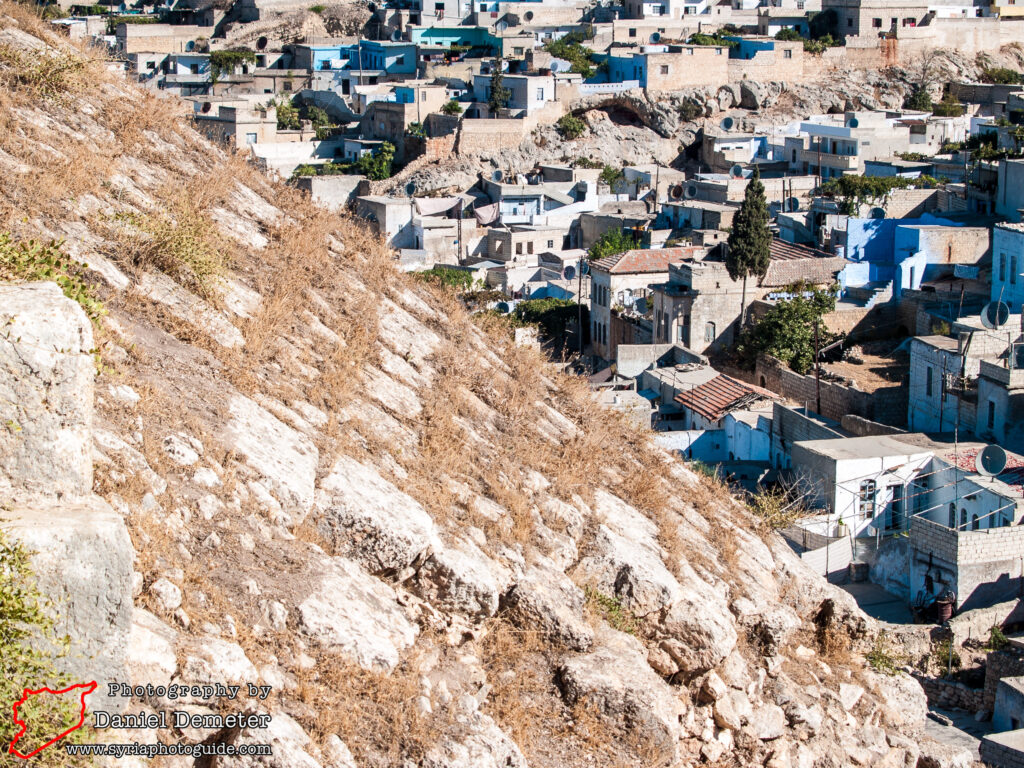
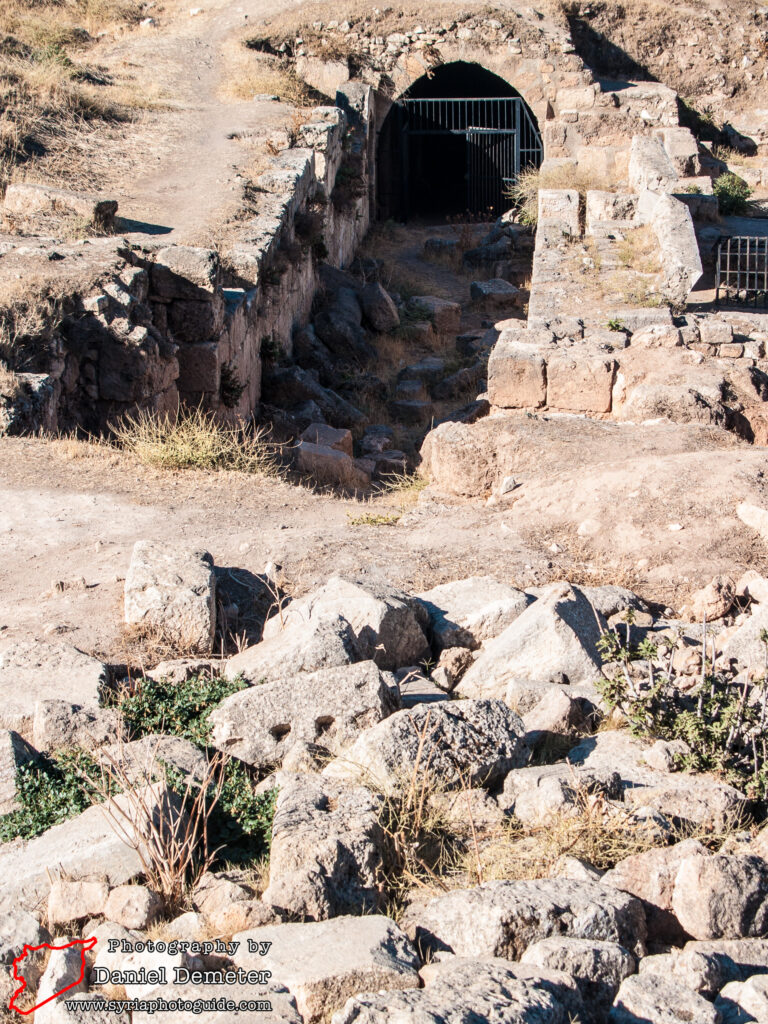
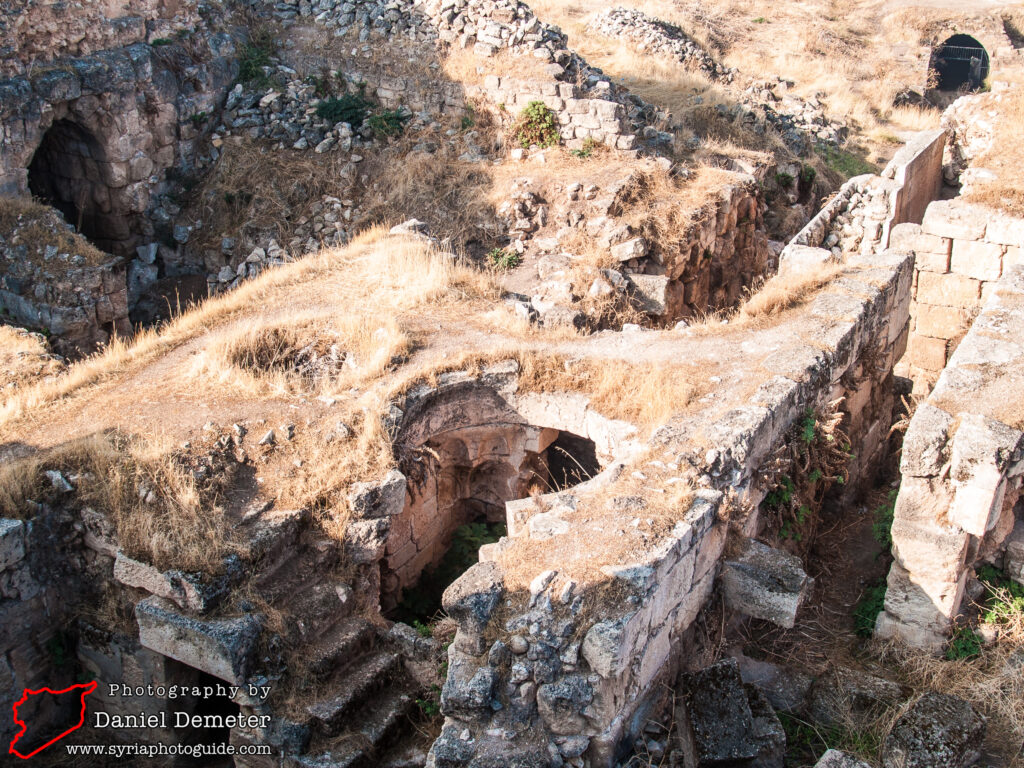
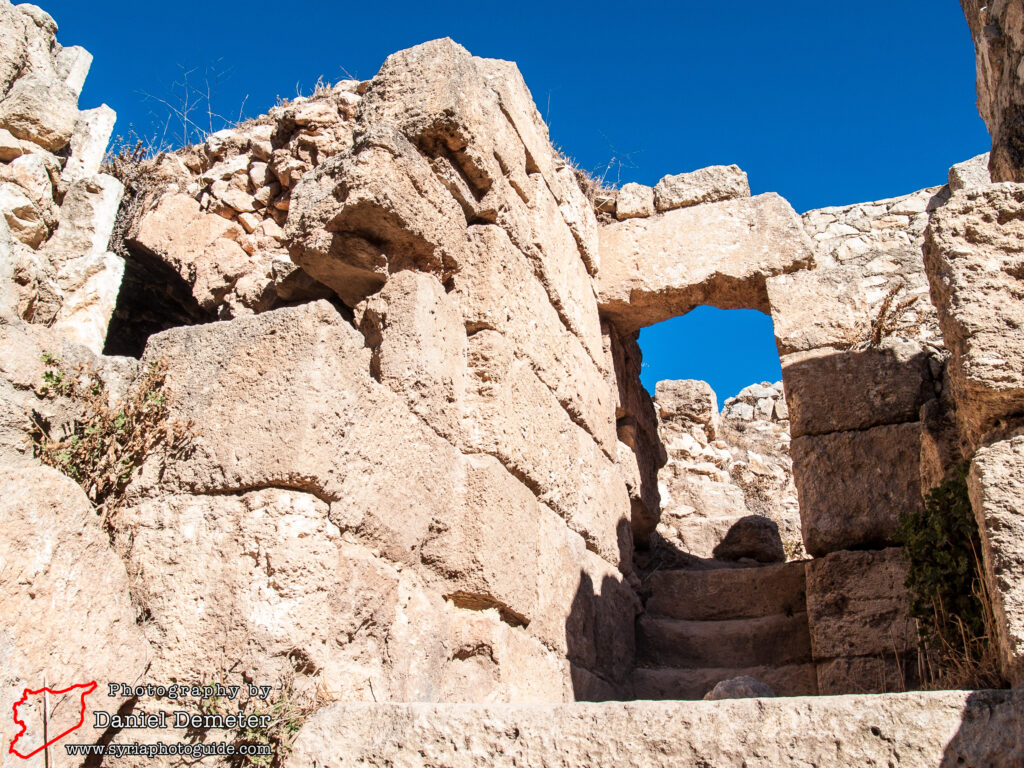
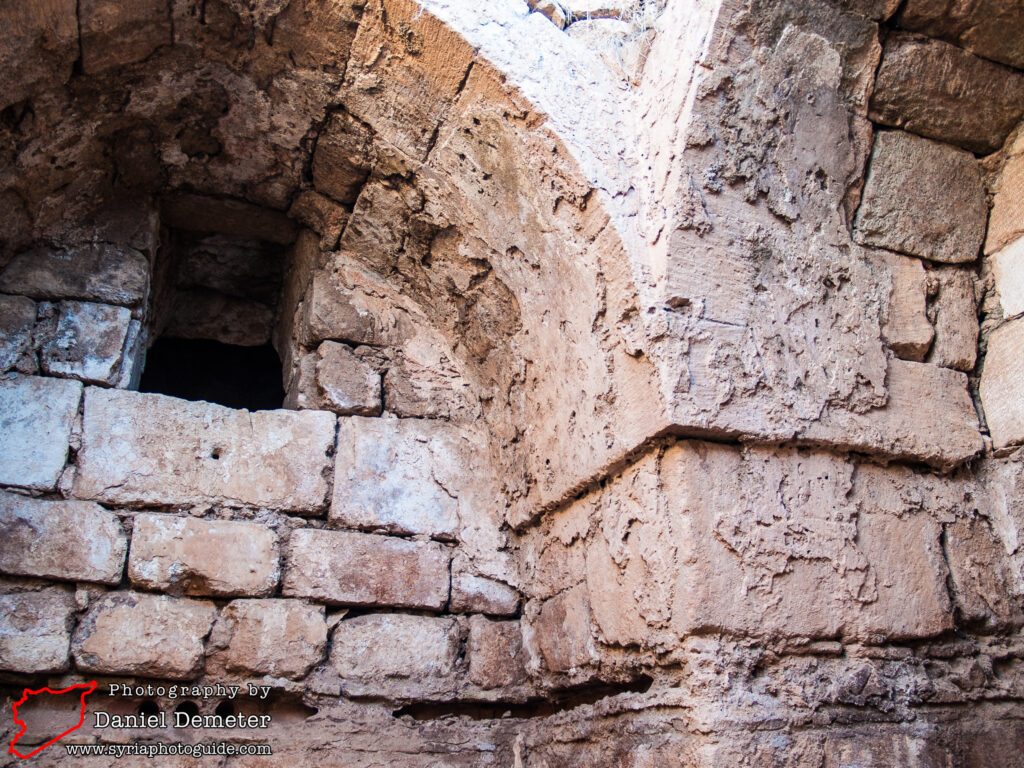
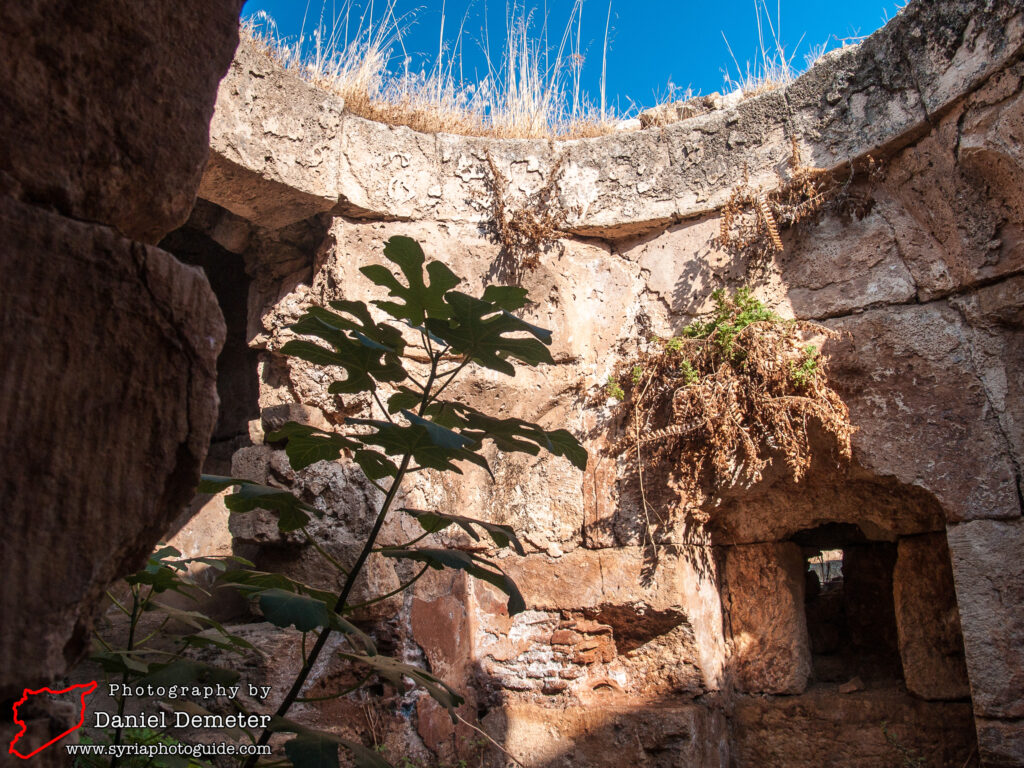

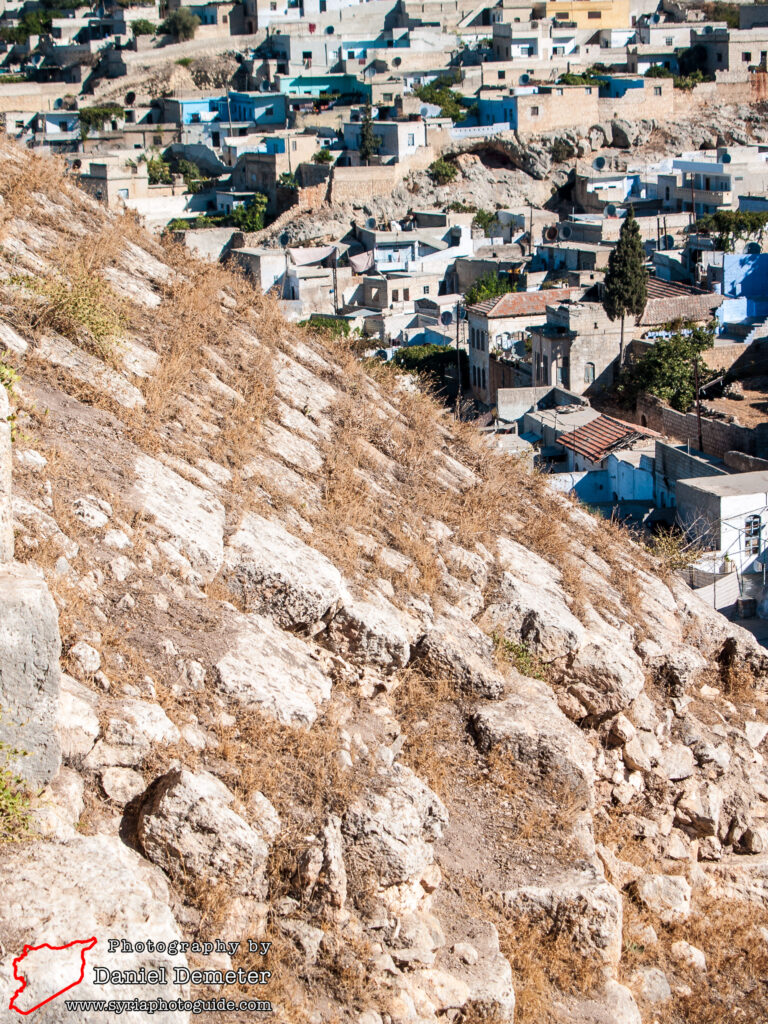
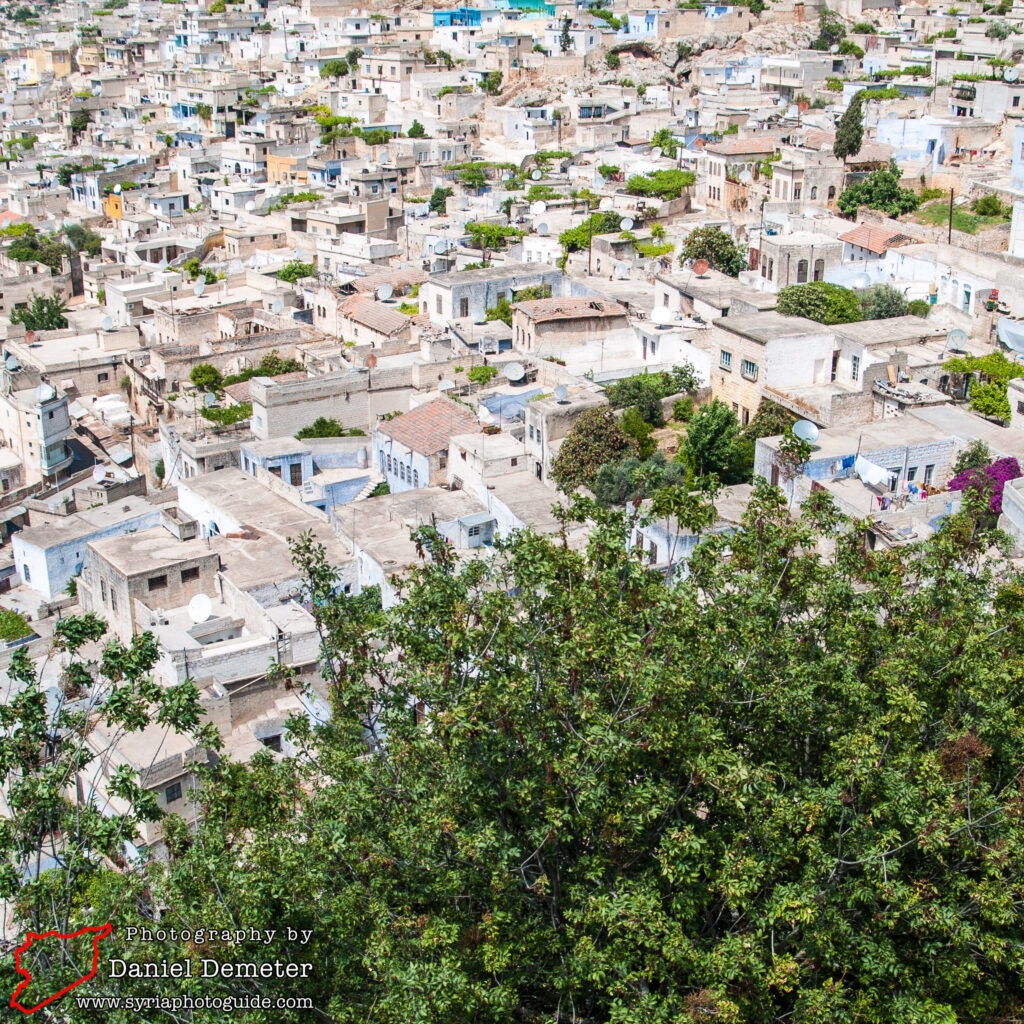
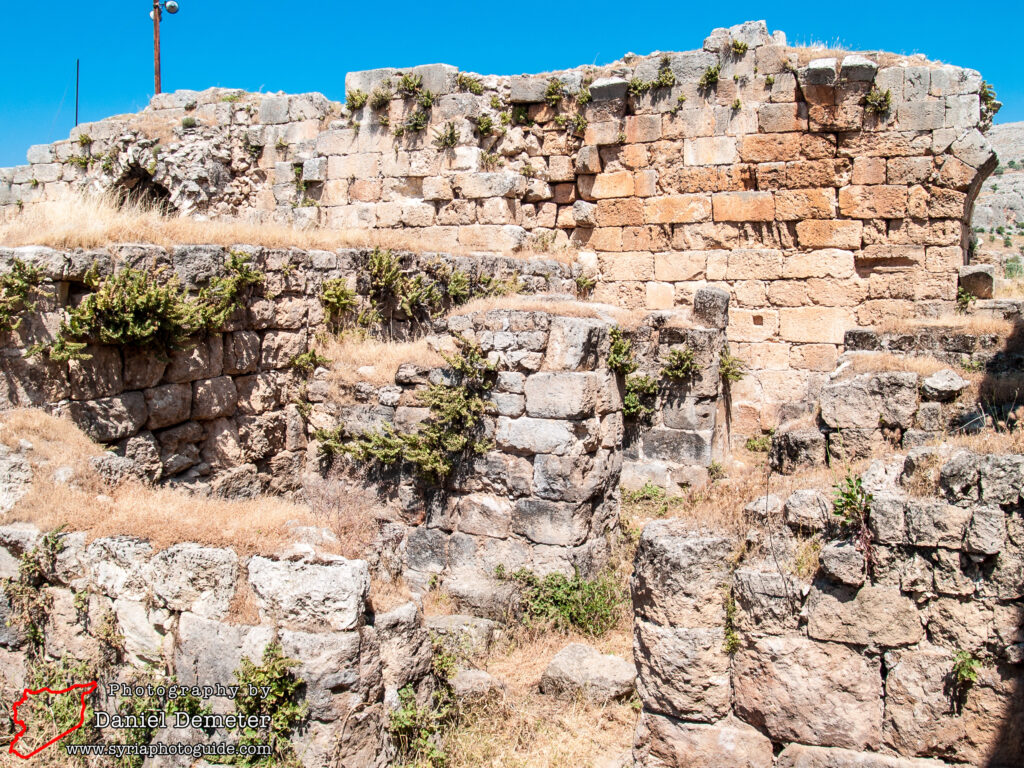
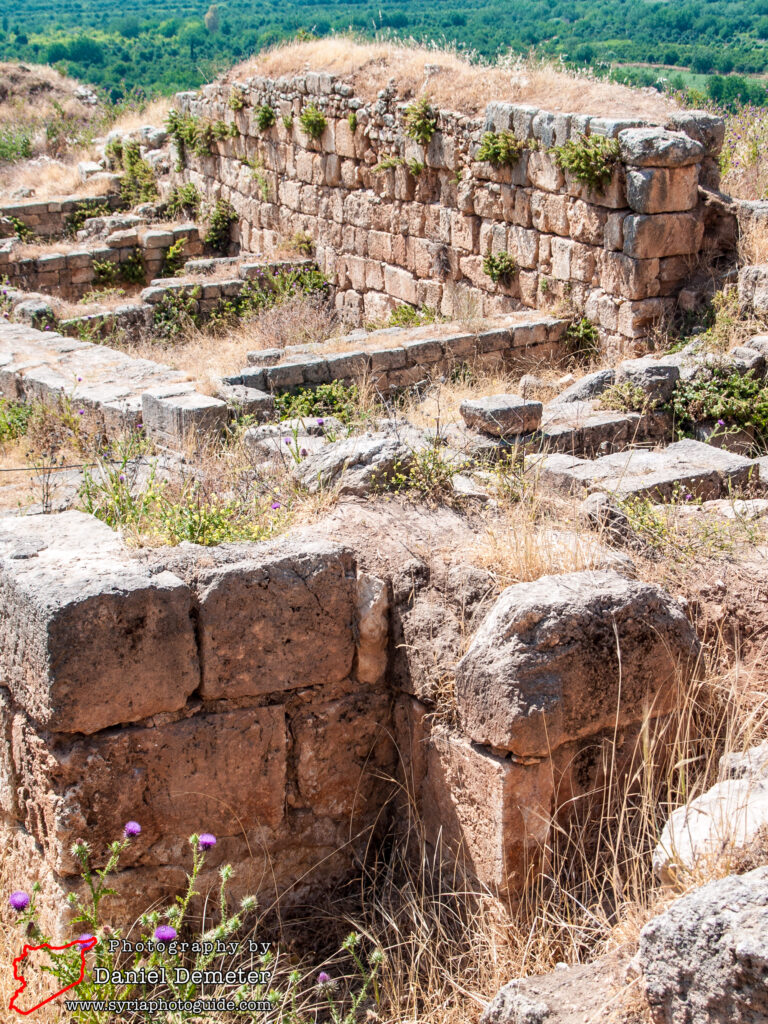
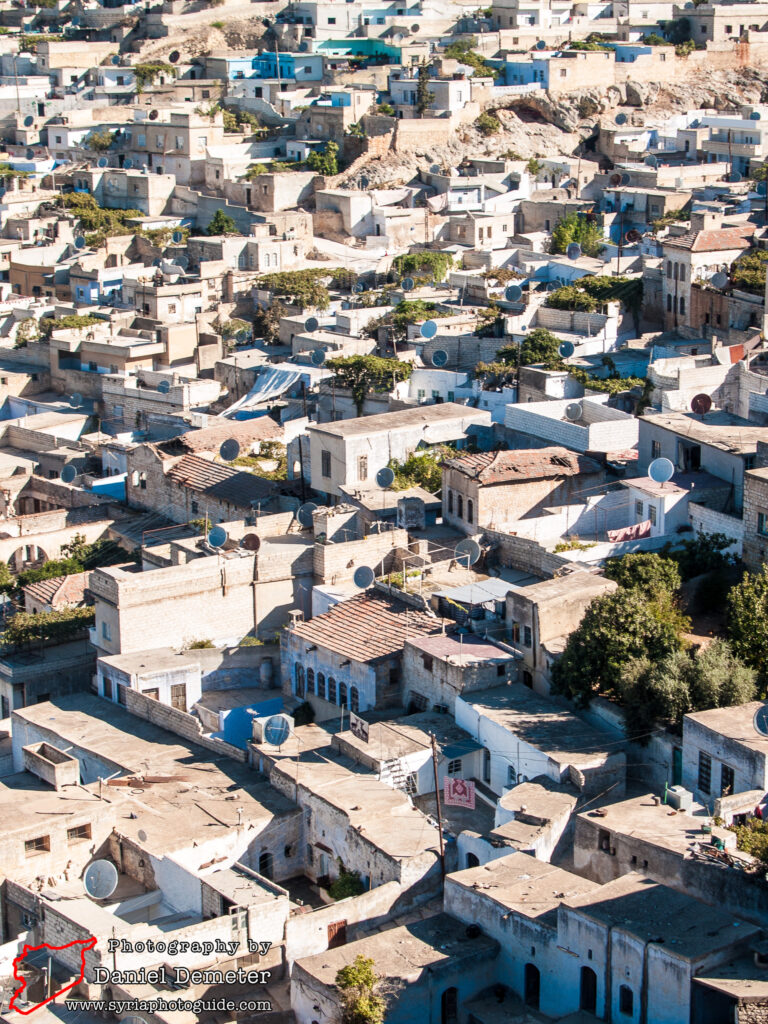
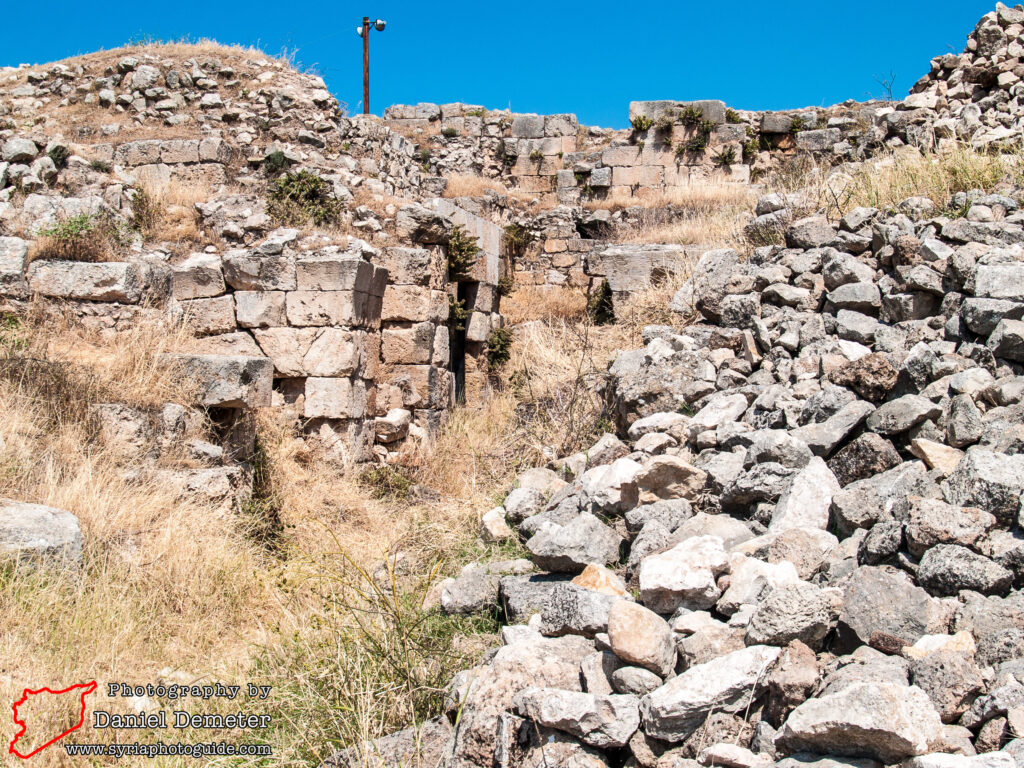
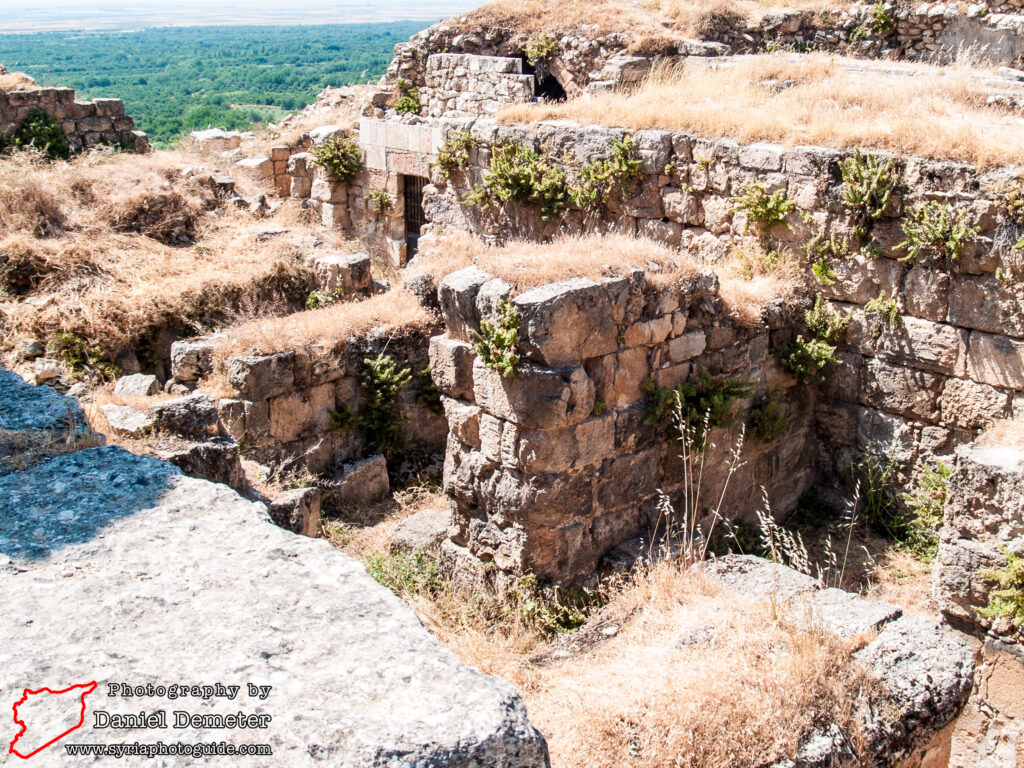
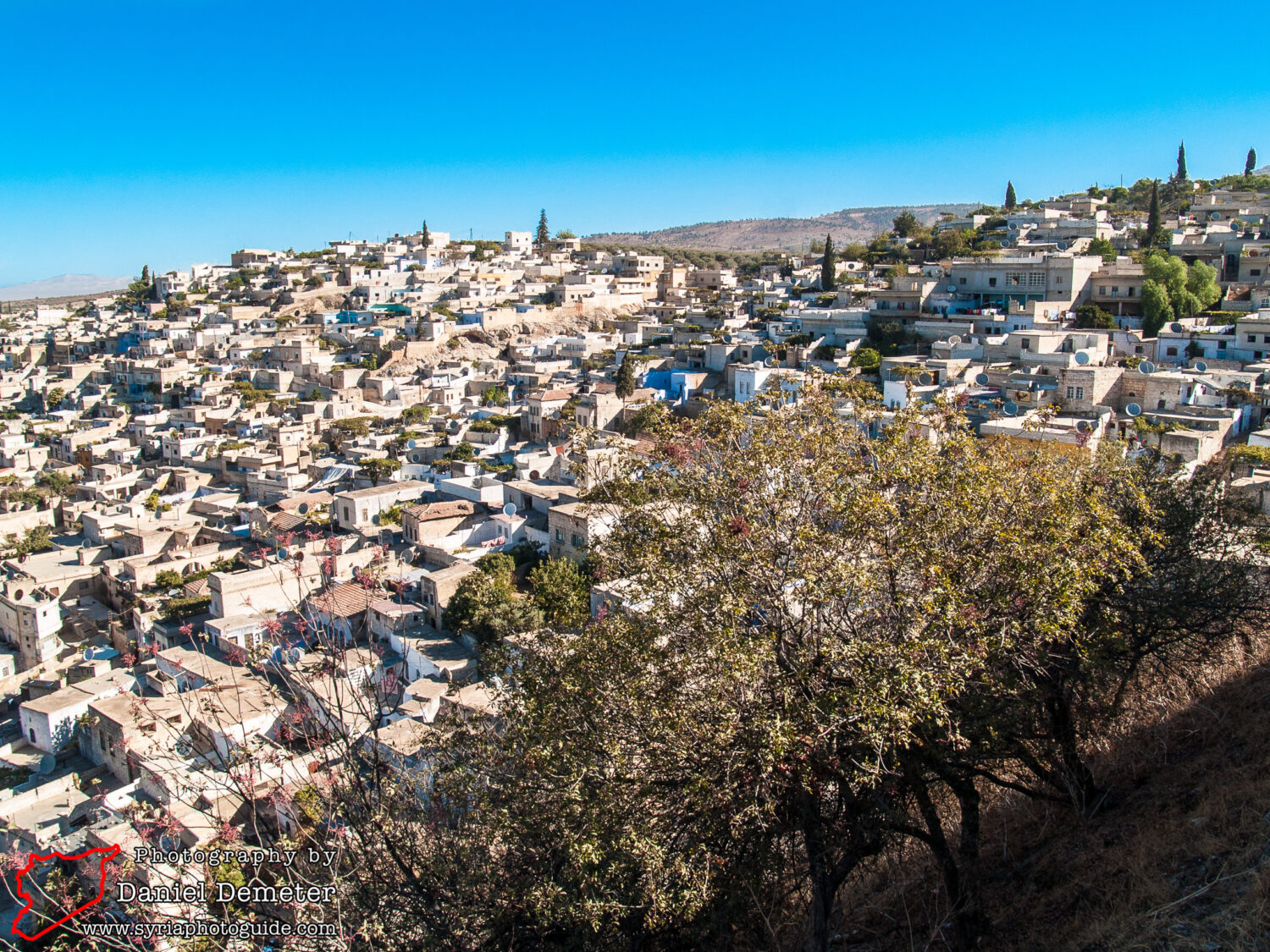
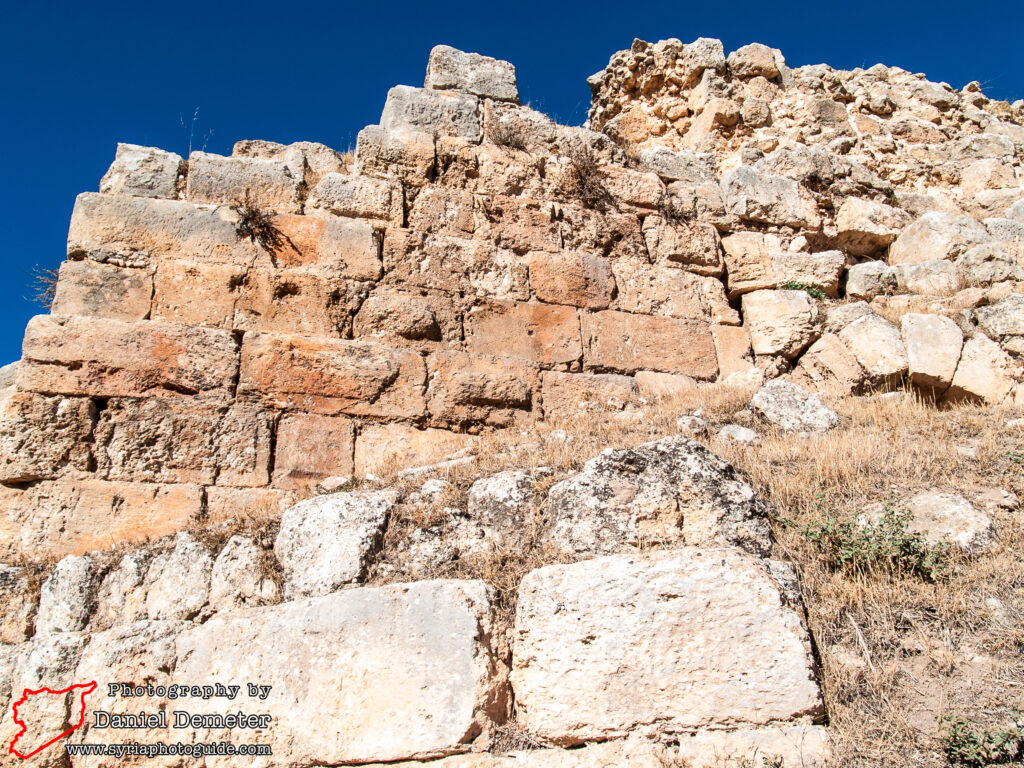
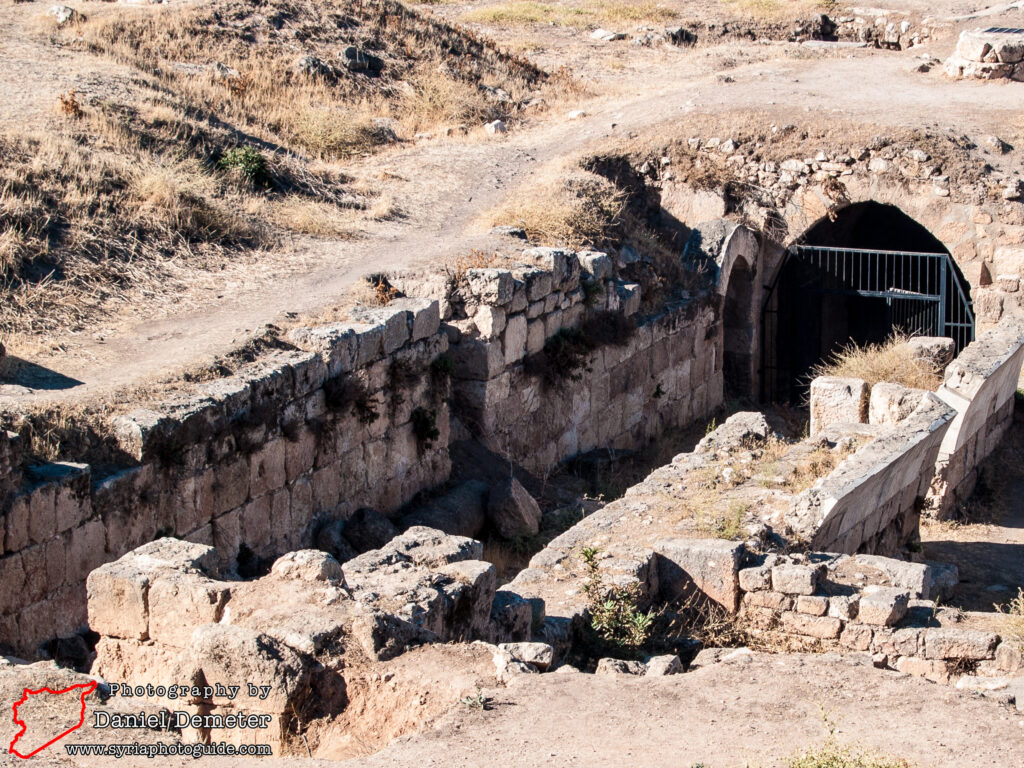
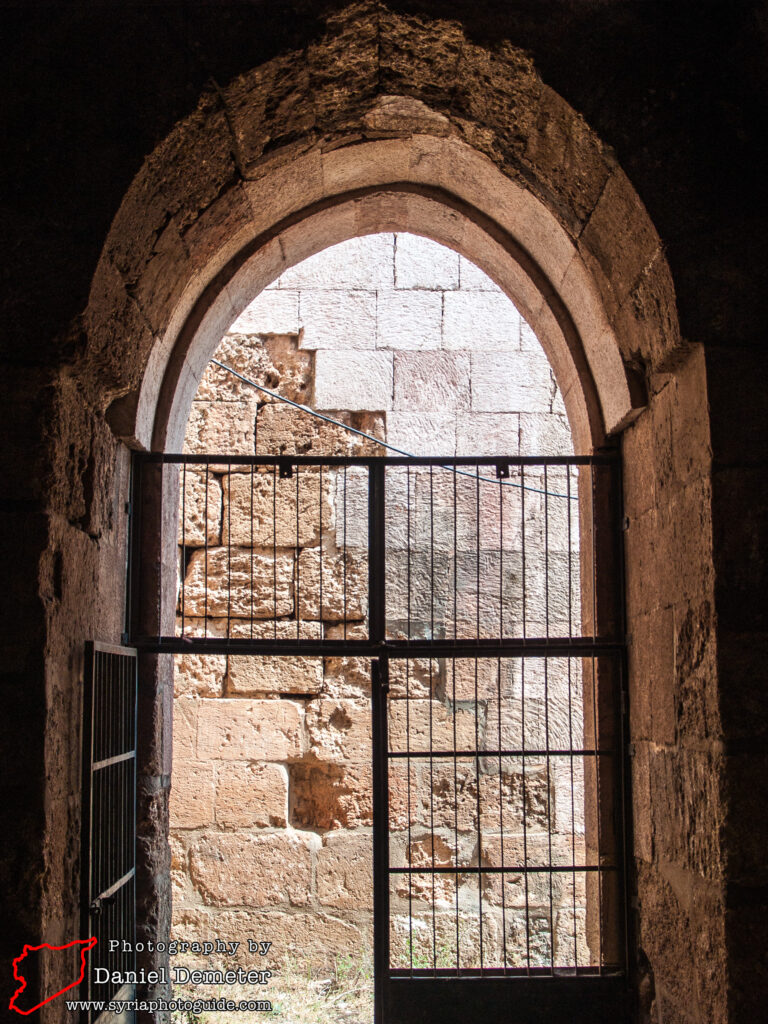
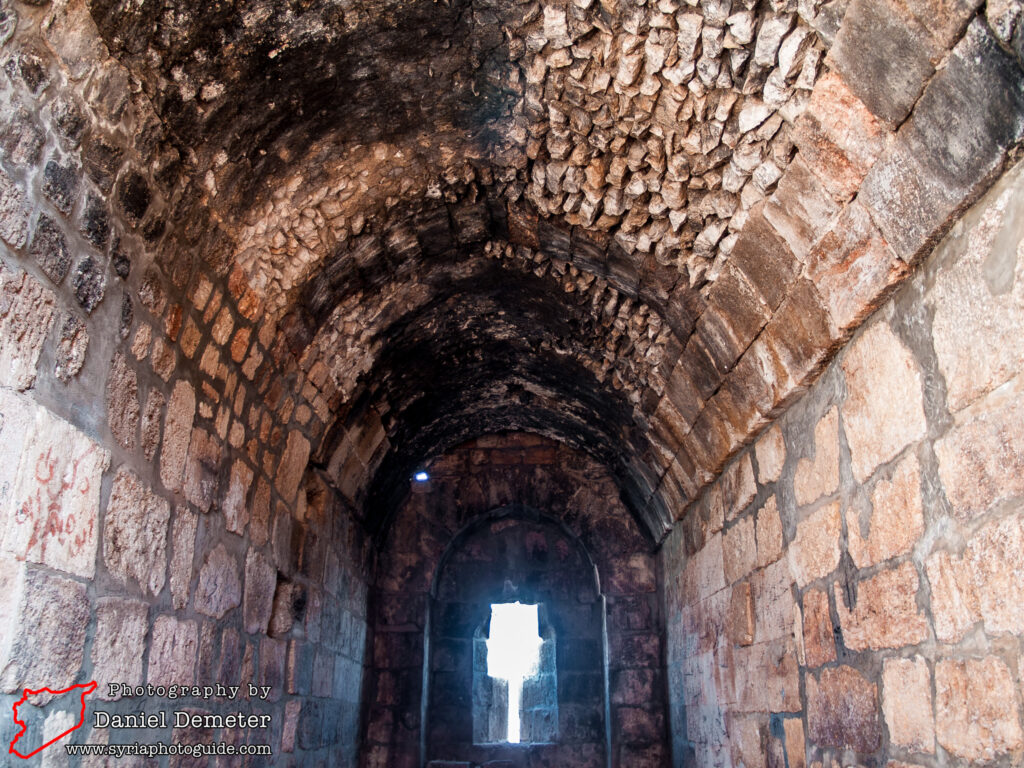
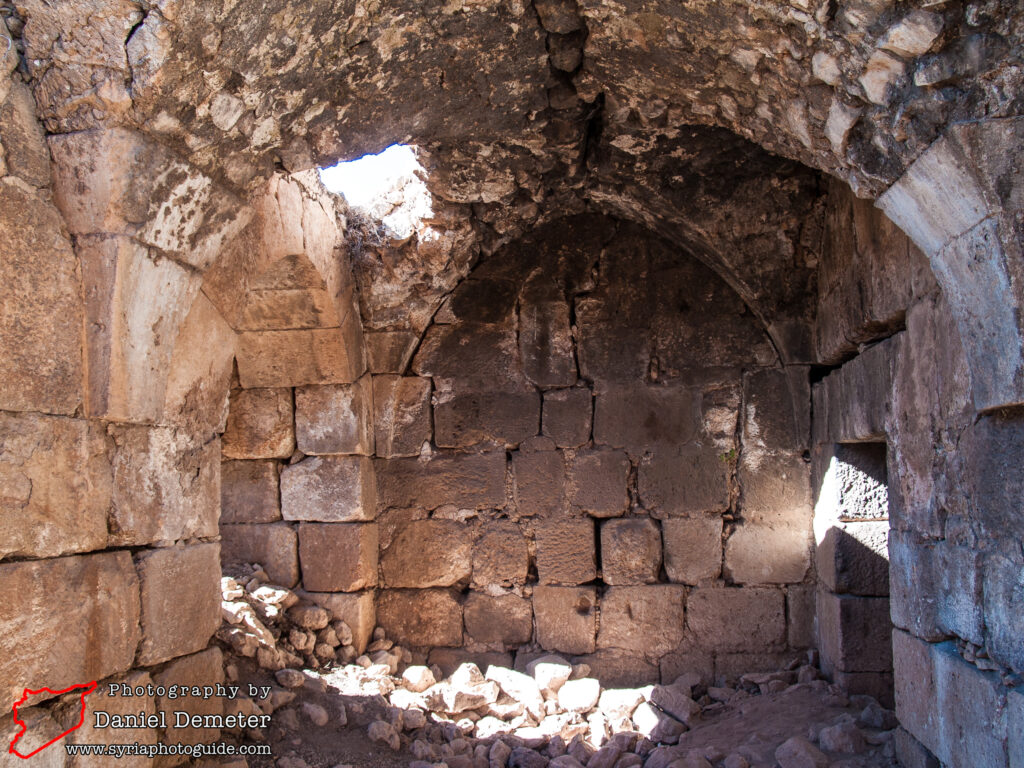
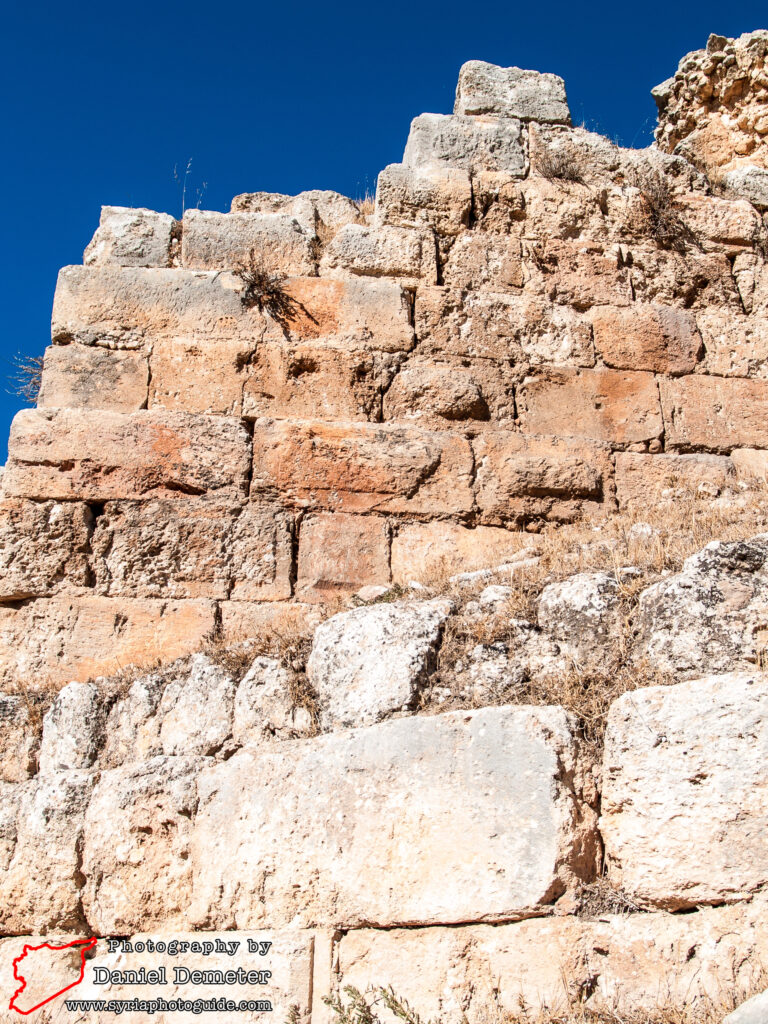
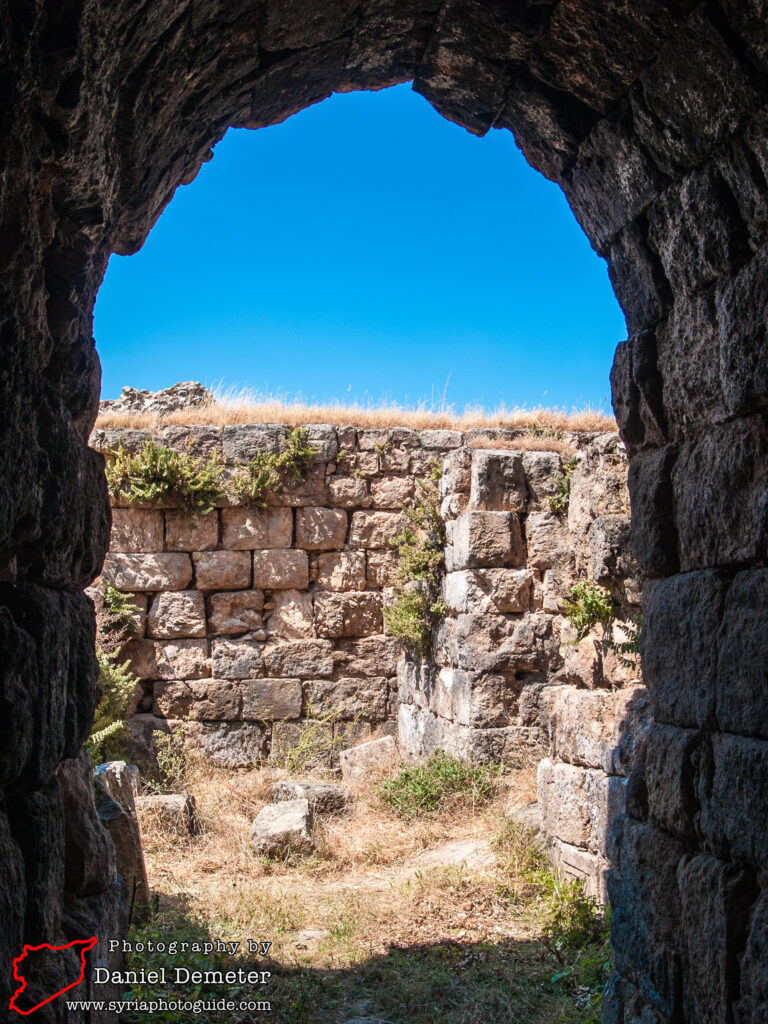
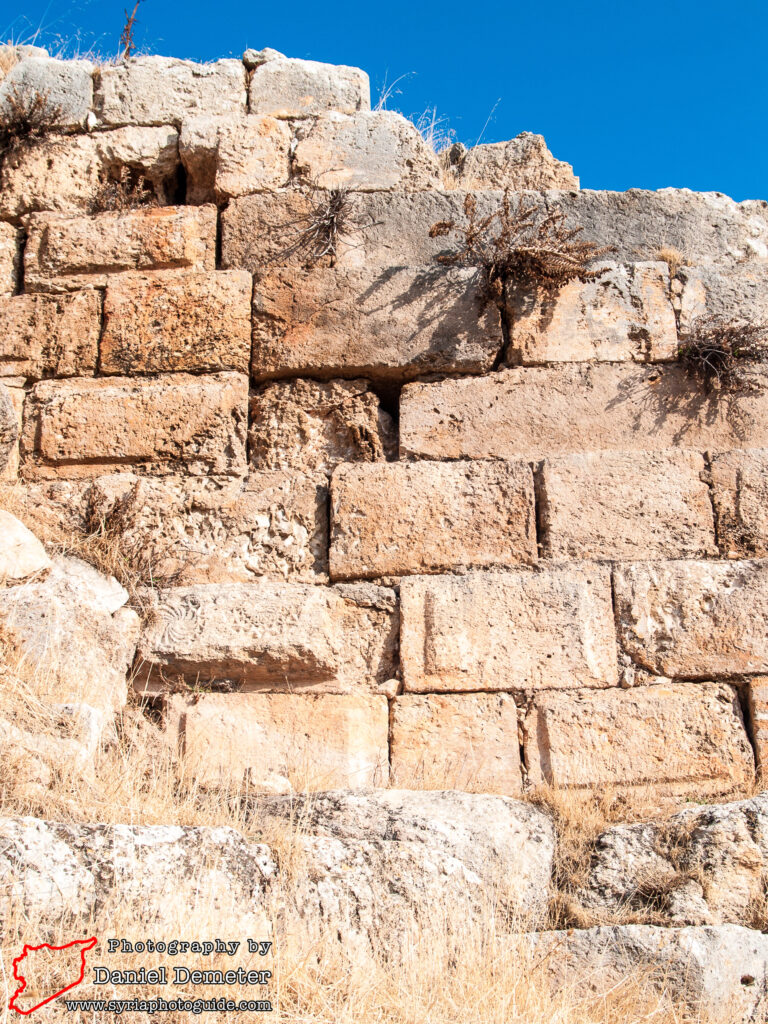
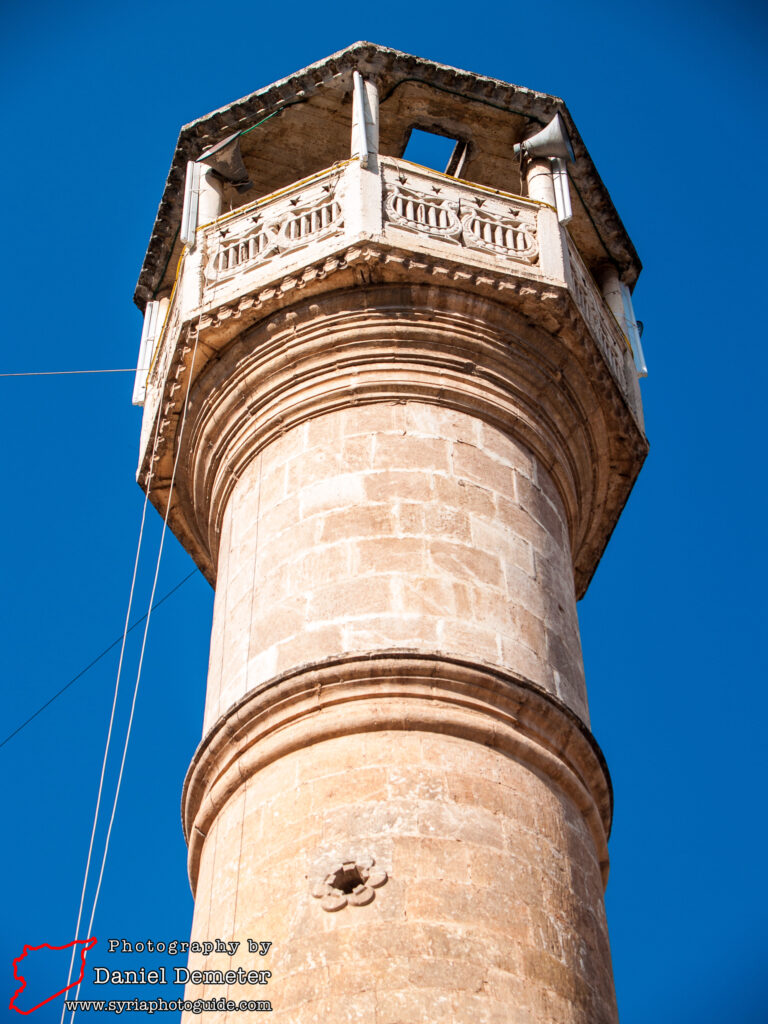

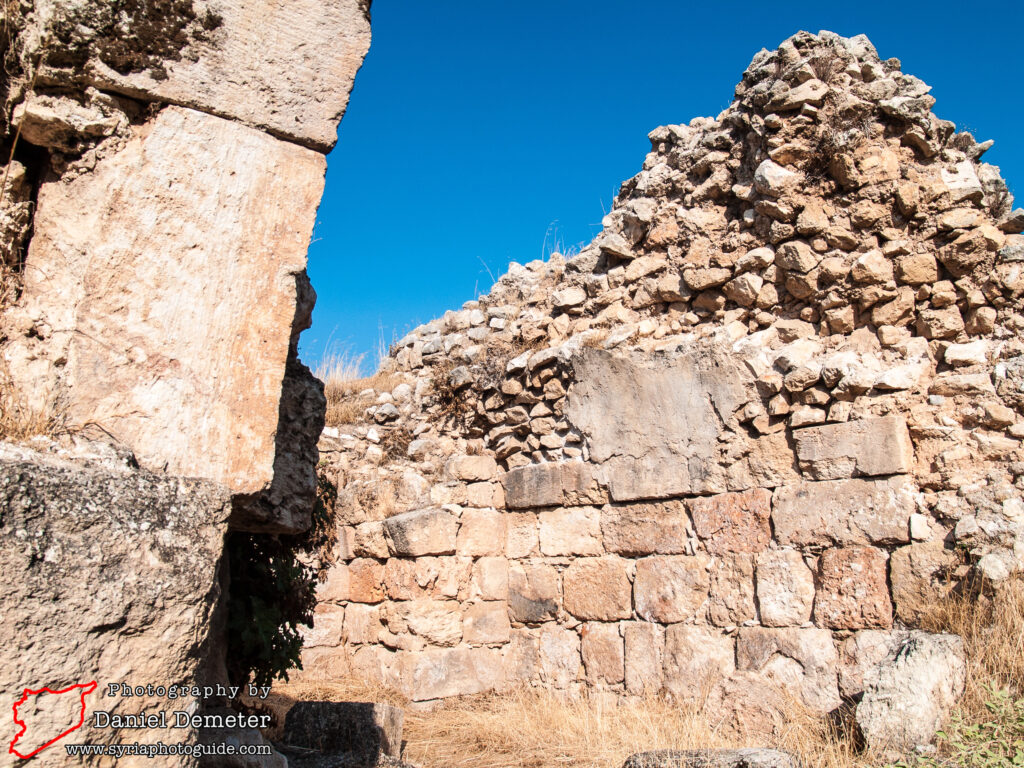
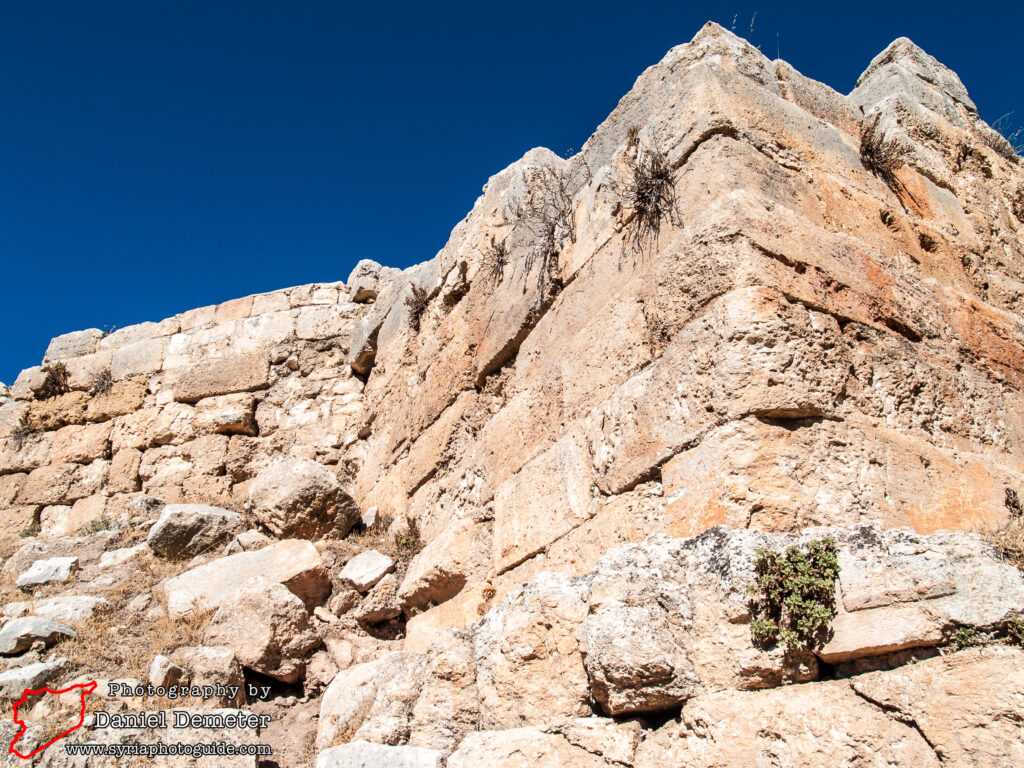
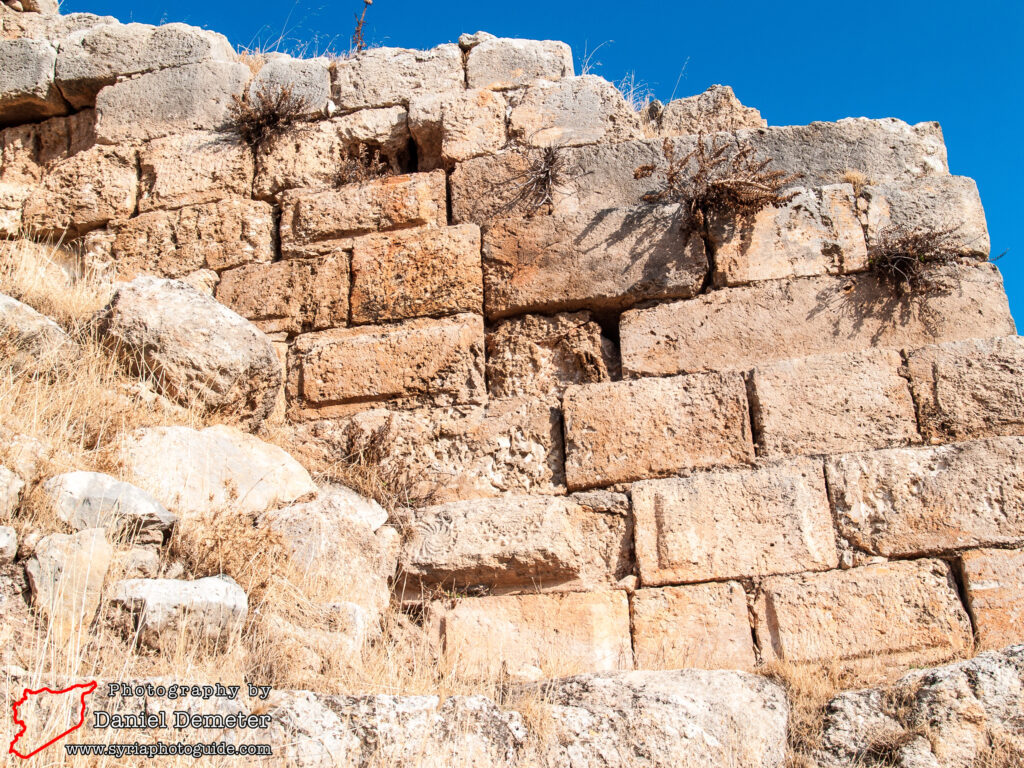

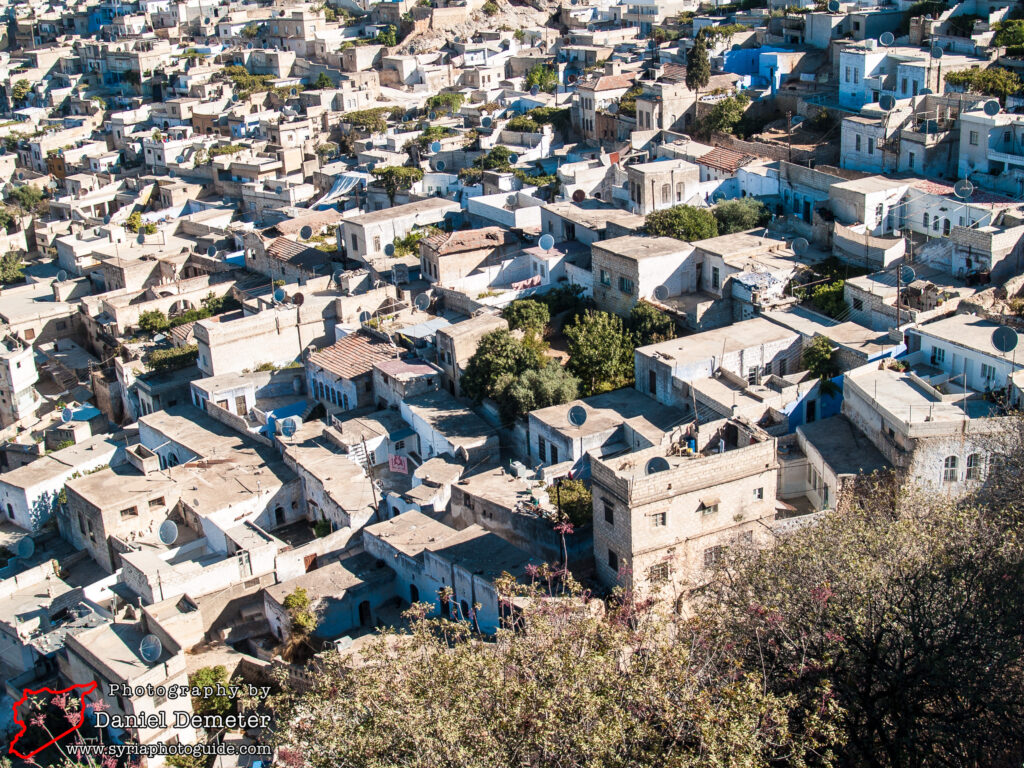
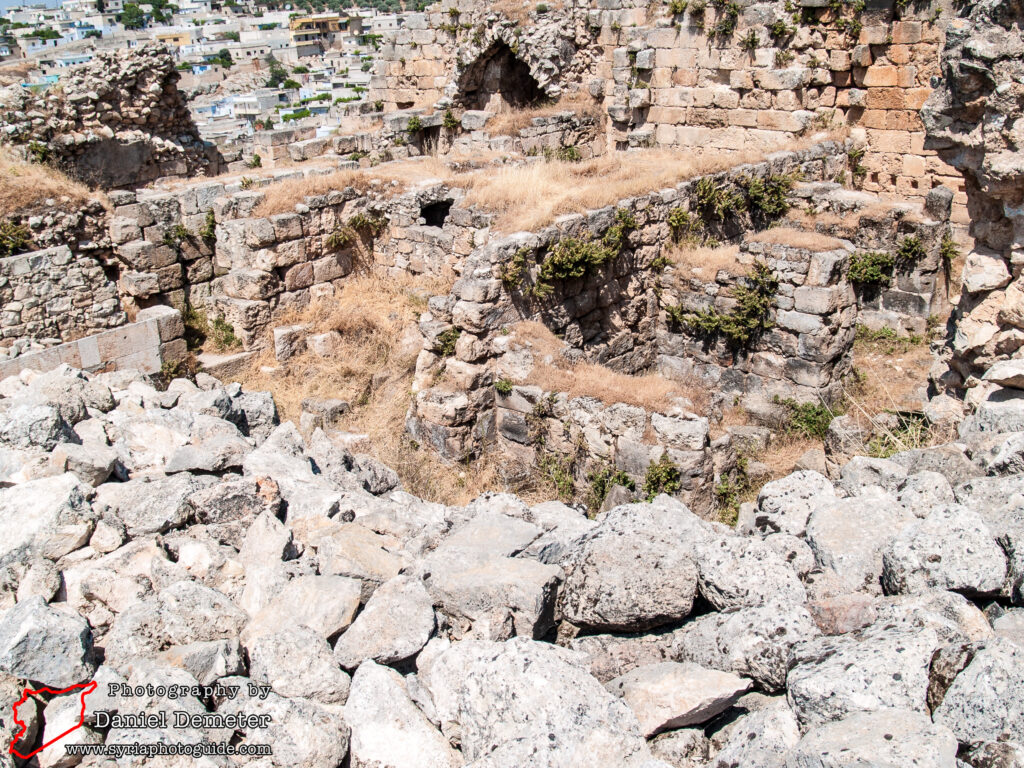
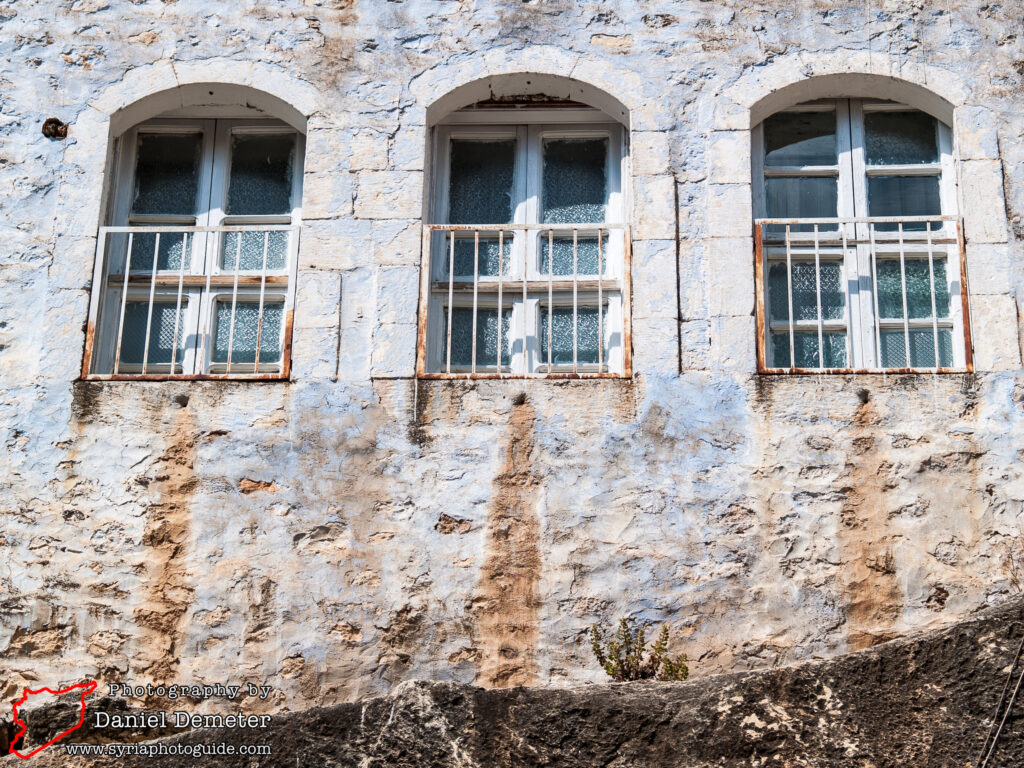
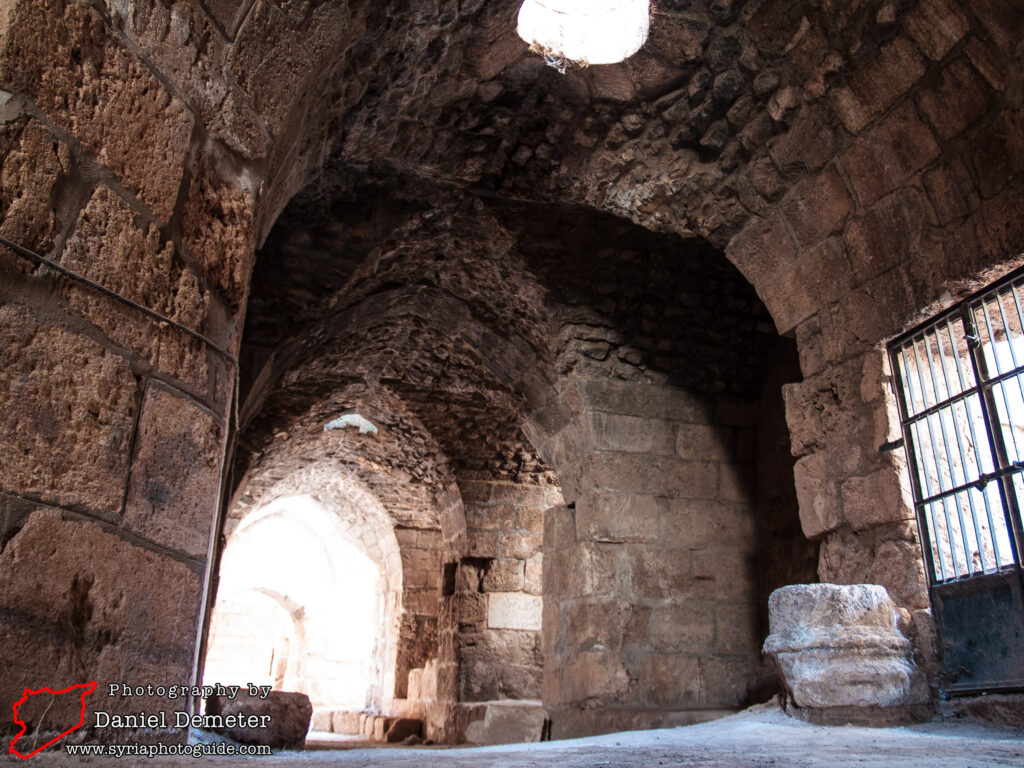
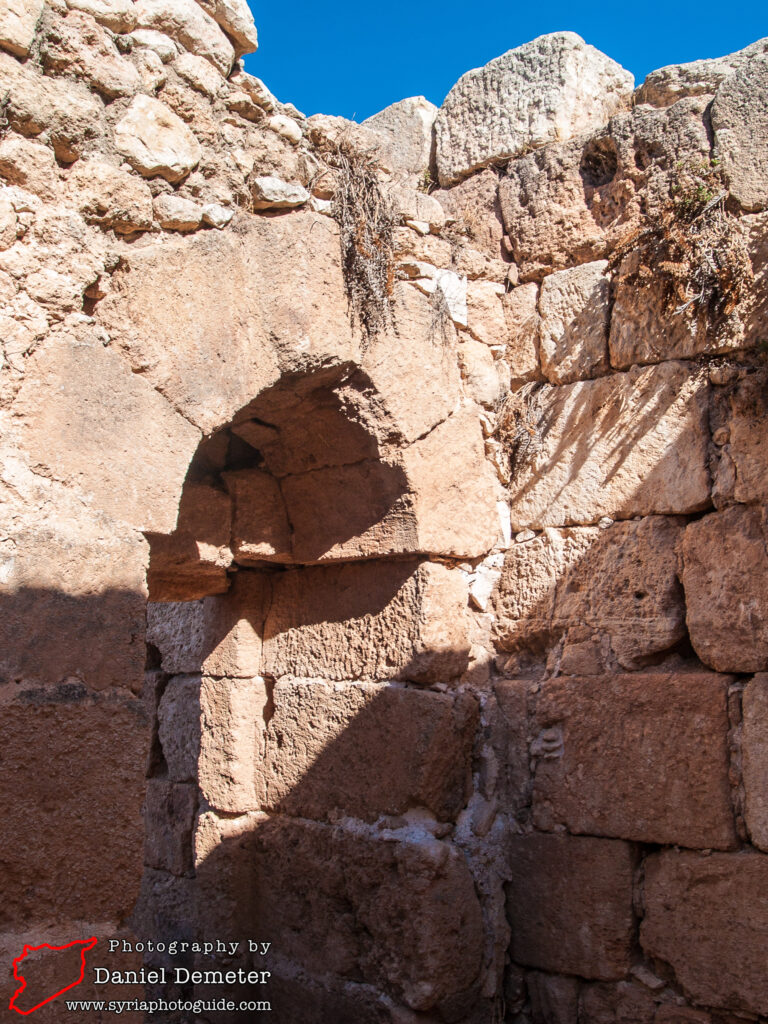
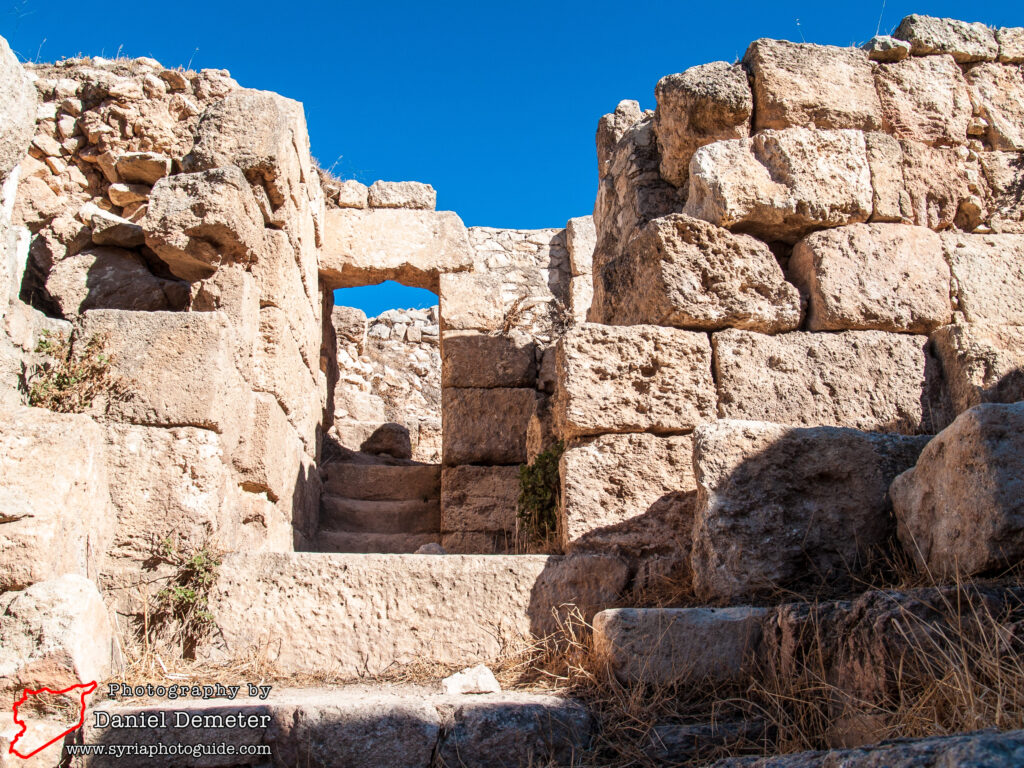
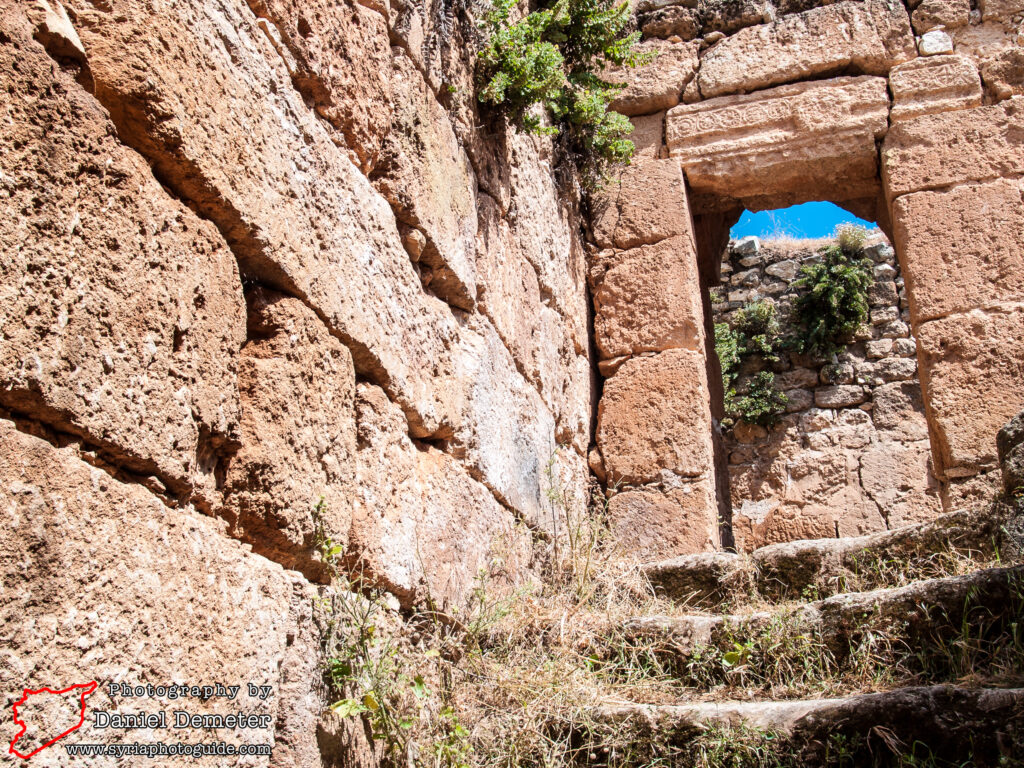

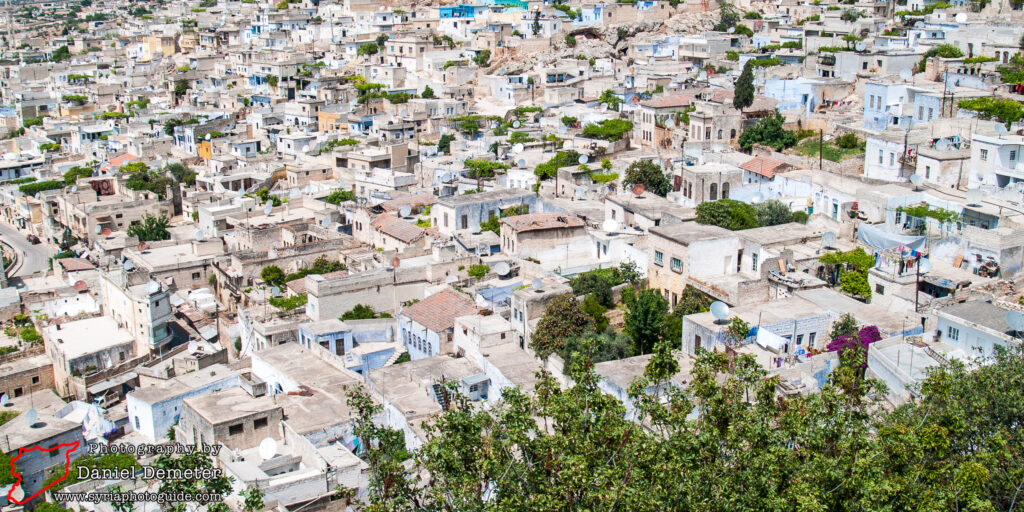
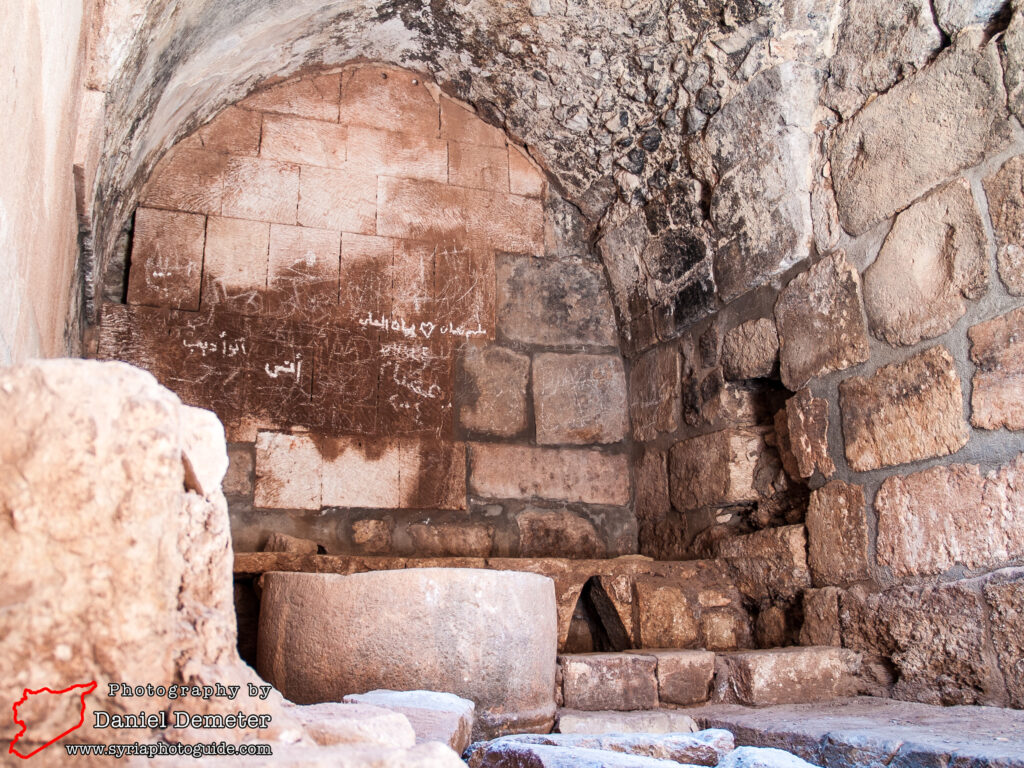
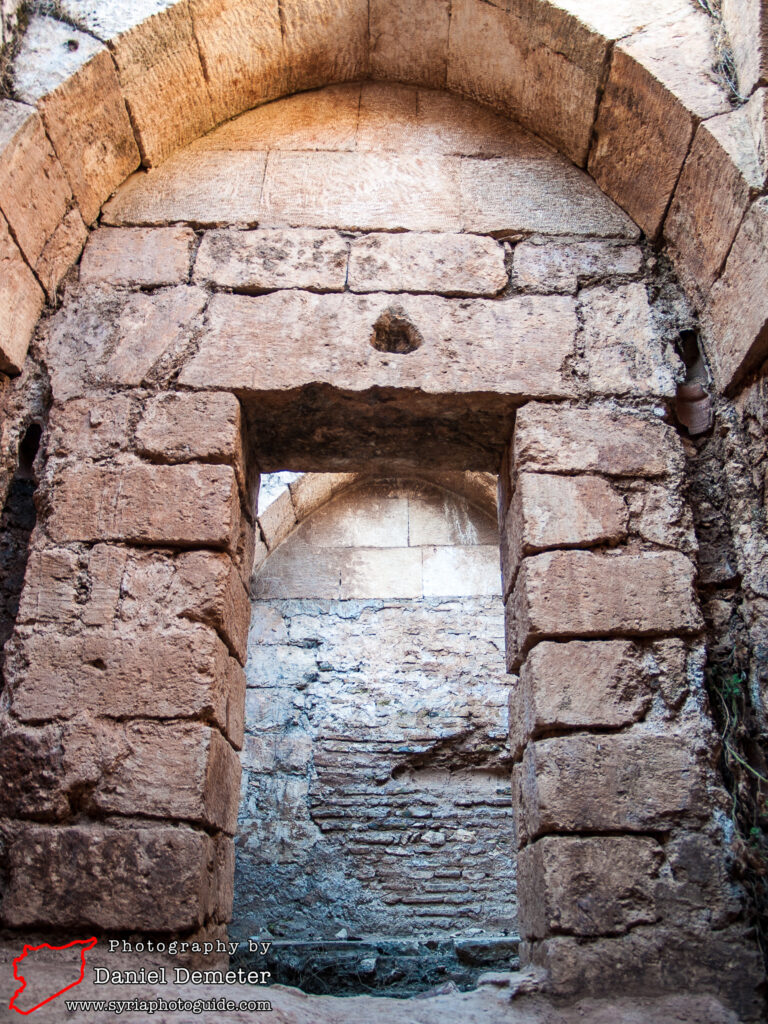
Getting There: Reaching Harem (حارم) is fairly straight-forward, as the town has fairly frequent microbus connections with Aleppo (حلب). The trip takes a little over an hour. There are also occasional microbuses between Harem (حارم) and Idleb (إدلب). Given the proximity to the Roman and Byzantine sites of Jebel al-Aala (جبل الأعلى) and Jebel Barisha (جبل باريشا), it would be logical to combine a visit to Harem (حارم) with some of these sites.
Coordinates: 36°12’27.33″N / 36°31’08.69″E
Transliteration Variants: Harim, Haram
Rating: 5.5 / 10
